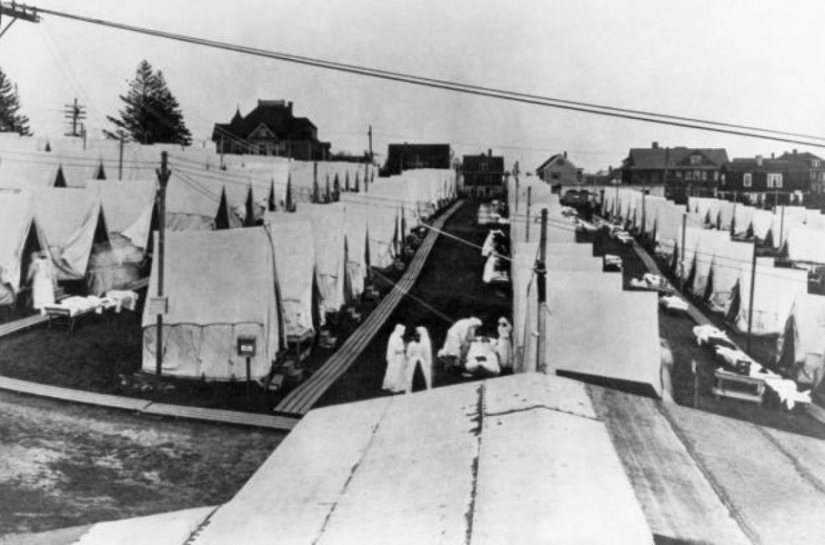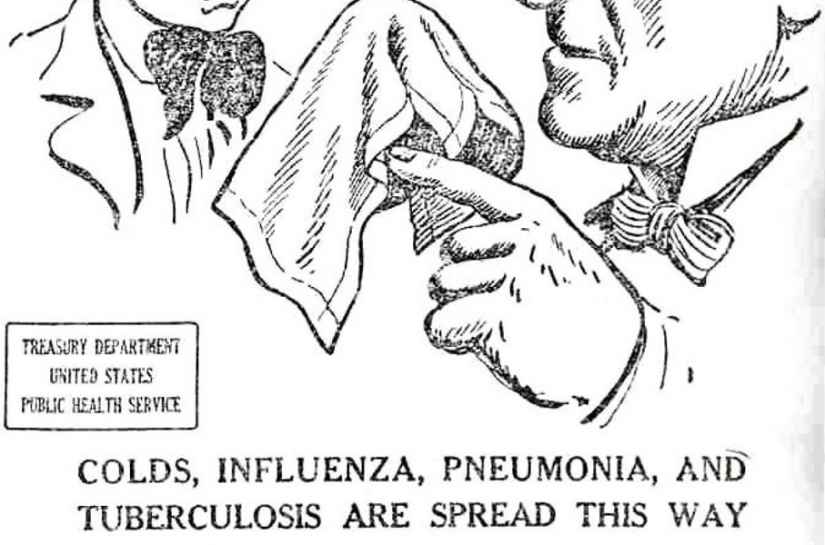Spanish flu: the story of the worst epidemics of the 20th century
Categories: Health and Medicine | History
By Pictolic https://pictolic.com/article/spanish-flu-the-story-of-the-worst-epidemics-of-the-20th-century.htmlThe death of hundreds of millions of people in just 18 months — is not the scenario of the Apocalypse clean water. The Spanish flu, awakening at the end of the First world war, has infected about 500 million people and, according to various estimates, claimed 10-20 times more lives than 4 years of bloody battles. About how such a thing could happen in the light of medicine and science of the time, written many books, but the best the chronology of the Spanish flu is illustrated and photographs of those years.
Scientists have not been able to establish patient zero and the country-the point of origin of a deadly strain. Mutated Spanish equally guilty in a flash of lethargic encephalitis, increased incidence of which was seen in a couple of years after the primary disease was on the decline.

The Spanish flu was named due to the fact that in this country was the first serious outburst of the epidemic.

Scientists have not been able to establish patient zero and the country-the point of origin of a deadly strain.

War and poor sanitation contributed to the rapid spread of infectious disease worldwide and its rapid mutation.

According to one version, the Spaniard could be native to China, since many of the nearly hundreds of thousands of Chinese soldiers arrived at the end of 1917 on the Western front, was to some extent infected with influenza.

If other disease typically attacked the weak and helpless, Spanish smelled all in a row, including a perfectly healthy young people.

The second wave of the flu in the autumn of 1918 killed just a couple of days.

In America the flu came back in March 1918, but then it did not attach a special importance. Reminiscent of recent events with Ebola, isn't it?

Many doctors recommend the wrong means of prevention of the disease, as corny did not know that the disease was caused not by bacteria and virus.

The governments of different countries late, but still began to impose quarantine, restricting large crowd of people, the work of state institutions and public transport. It seemed that the world froze in anticipation.

In the absence of a battered war-the vaults of necessary medicines and vaccines of the Spanish flu forced to leave patients in the lurch, albeit under the supervision of doctors.

Population census at the end of the epidemic in the summer of 1919 showed that in America, died 615 000 of the total 50-100 million casualties.

Spanish flu can confidently be called the father of many modern strains. Thus, in particular, in direct relationship with it is the swine flu that killed around 12 thousand people in 2009.

A vaccine strain of 1918 had been developed in our days, but, interestingly, it was effective against SARS and avian influenza.
Keywords: Health and medicine | History | Influenza | 20th century | Epidemic | Virus | Quarantine
Post News ArticleRecent articles

American artist Lee Price is sure that eating is a completely natural process, but many are ashamed of their attitude to food, ...

There is an unusual exhibit at the National Museum of Natural History in Washington. This is the skeleton of a man, on whose chest ...
Related articles

Many are tormented by the question — why do some grow long nails on his pinky. If you ask the owners of such "decorations", we ...

May West once jokingly said that she should be given a license to invent sex, which she discovered for Americans. The name of this ...

The Indochina Peninsula, located in southeast Asia, is a favorite place for tourists all over the world. Myanmar, Thailand, Laos, ...

A series of works by photographer Brian VILS from new York, dedicated to girls, sheltered the homeless and abandoned cats. 'brien ...